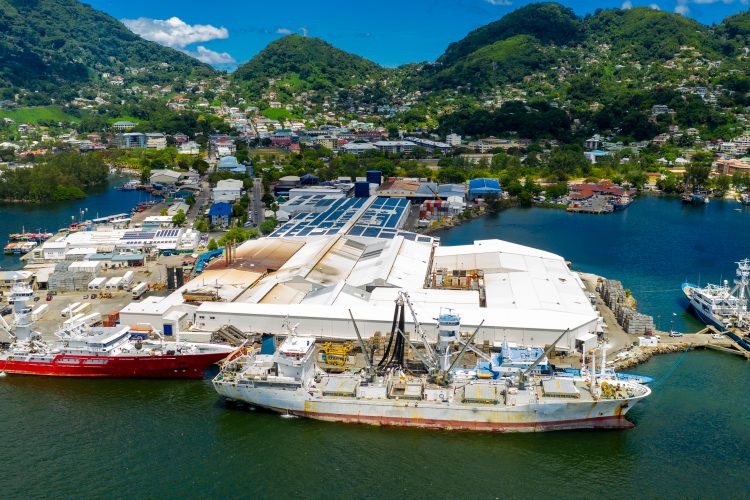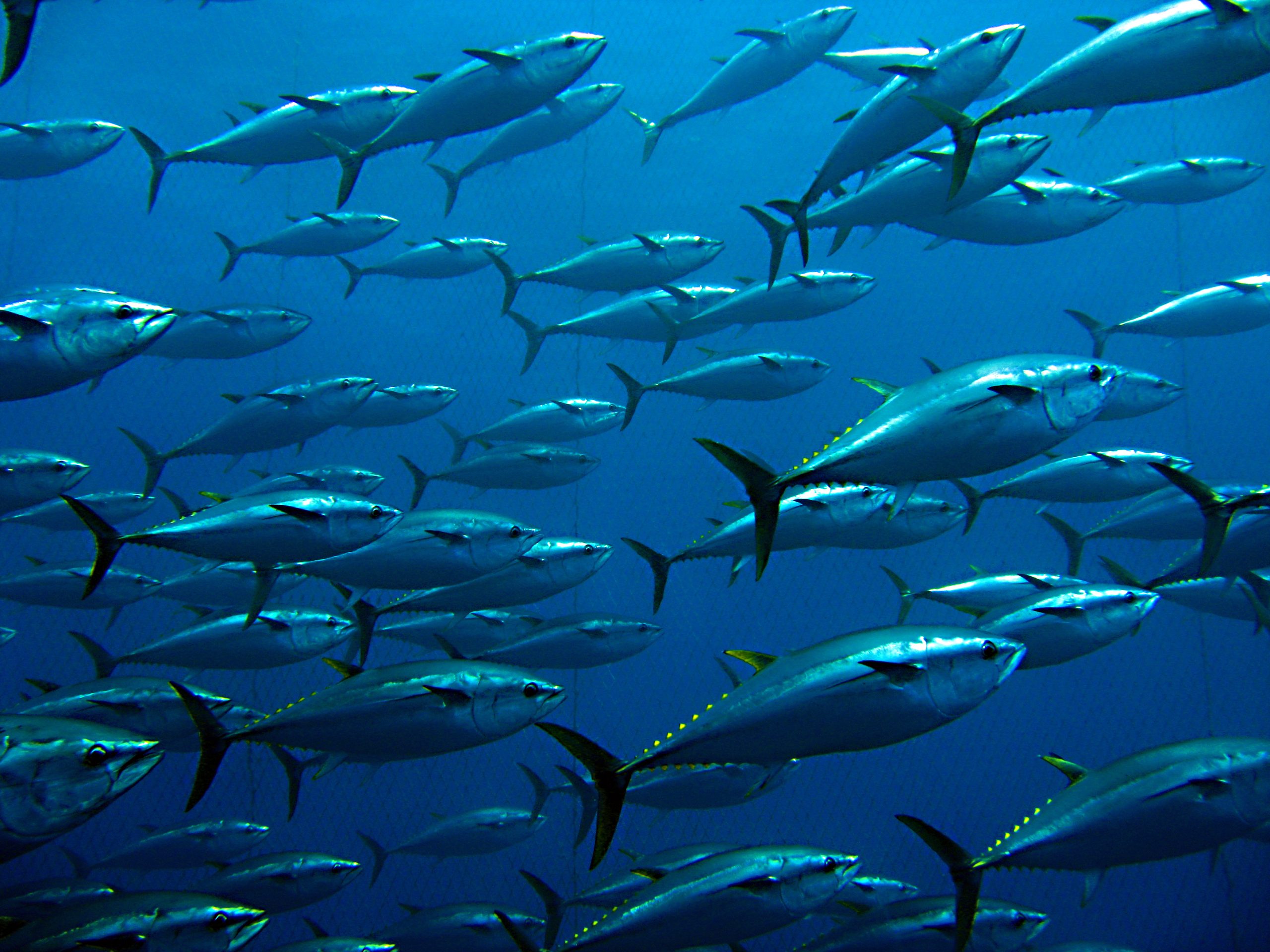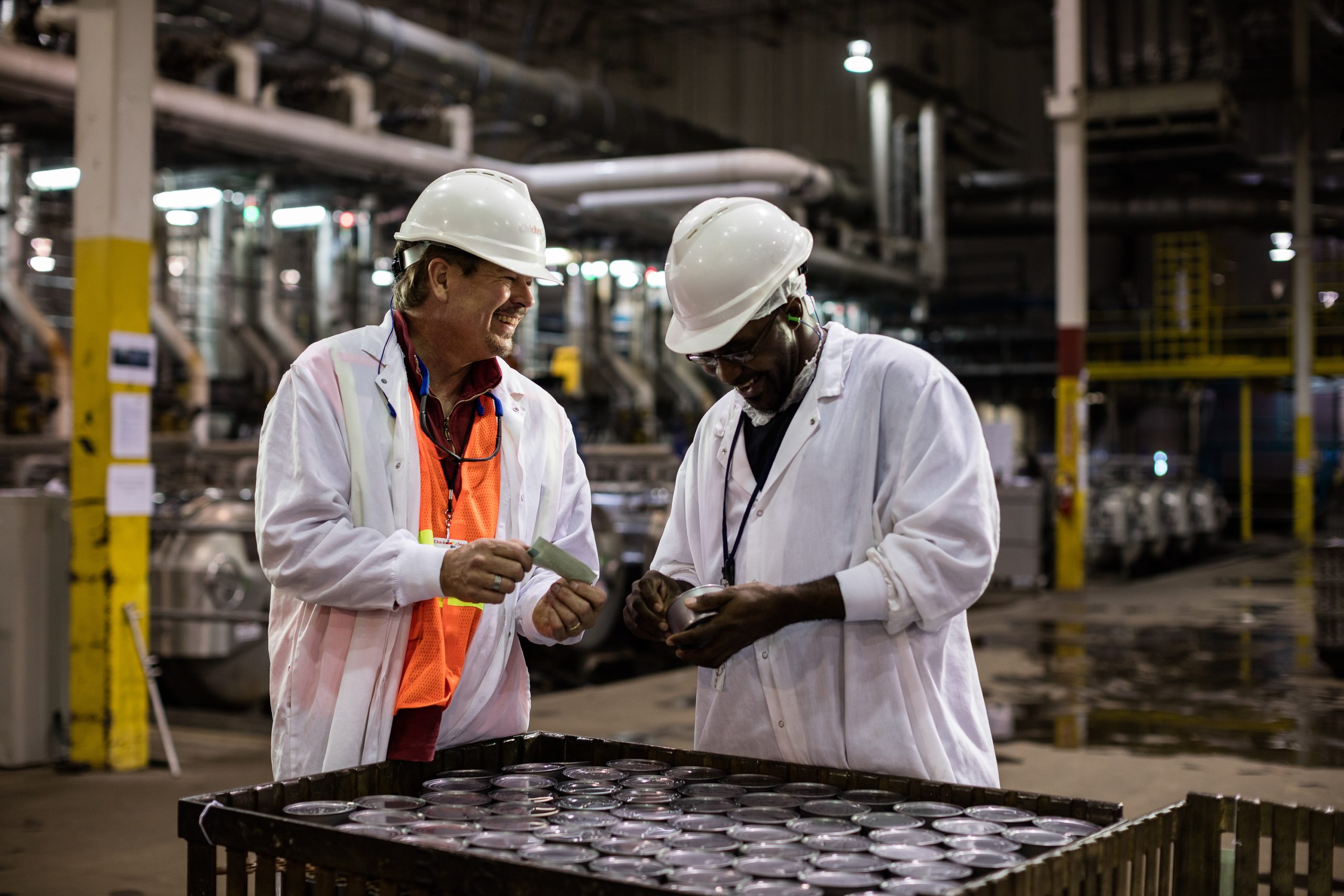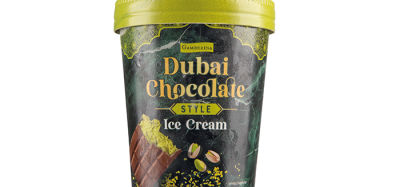“Sustainability costs money”: Diving into SeaChange® 2030
- Like
- Digg
- Del
- Tumblr
- VKontakte
- Buffer
- Love This
- Odnoklassniki
- Meneame
- Blogger
- Amazon
- Yahoo Mail
- Gmail
- AOL
- Newsvine
- HackerNews
- Evernote
- MySpace
- Mail.ru
- Viadeo
- Line
- Comments
- Yummly
- SMS
- Viber
- Telegram
- Subscribe
- Skype
- Facebook Messenger
- Kakao
- LiveJournal
- Yammer
- Edgar
- Fintel
- Mix
- Instapaper
- Copy Link
Posted: 8 August 2023 | Grace Galler | No comments yet
Adam Brennan, Chief Sustainability Officer for Thai Union Group, sits down to discuss how $200m of funding for the SeaChange 2030 project will be used for sustainable advancements in the seafood sector


In this Q&A, Adam Brennan, Chief Sustainability Officer at Thai Union Group, sits down with New Food’s Grace Galler to discuss SeaChange® 2030, a sustainability plan made with both people and the planet in mind.
The seafood sector reached a value of over $257 billion in 2022 but it’s growth is showing no signs of stopping. In fact, according to Statista, the seafood sector is set to reach a value of $350 billion by 2027.
With there being an evident demand for seafood, what is global seafood production leader Thai Union Group committing to when it comes to sustainability? Where is it investing its money and how it is communicating with various players, from fisheries to stakeholders, to ensure transparency and progressive change? These are all questions New Food posed to Brennan in the interview below…
Q: Who are you and what is Thai Union Group?
Adam Brennan (AB): As the Chief Sustainability Officer I am ultimately accountable and responsible for setting the future direction of sustainability for Thai Union Group as well as overseeing its global execution and implementation.
We are a Thai based company that has subsidiaries around the world, including in the UK. We own the brand John West and have a significant private label business meaning we supply to some of Europe’s top retailers. We have a number of brands across Europe such as Petit Navire in France and Rügen Fisch in Germany. In the US we have a large brand called Chicken of the Sea, as well as a portfolio of brands in Thailand.
Q: When working on a global scale, what does sustainability mean to you?
AB: Sustainability from my perspective is a real holistic view. Talking about the approach we took during the creation of SeaChange® 2030, we took a holistic view of the group’s impacts. This was both from an environmental, social and economic performance.
Sustainability is not new for Thai Union. We introduced our first sustainability strategy in 2016 and this focussed on two key issues. These were above and below water. We are a seafood company but we don’t own any vessels so we really had to work with our supply chain to drive improvements both above and below the water. This involves looking after the people on board the vessels while moving more of the fisheries towards sustainable management.
Our new strategy is personally how I define sustainability. It’s everything we have taken into account: all of the different business units within Thai Union and the social and environmental impacts we have as a group. This includes climate change, responsible sourcing, and looking at issues like biodiversity and ocean plastics.
We wanted to make sure that we are not defining sustainability through a single lens. So far we’ve looked at it from a social and biodiversity perspective. Nowadays, you see a huge amount of focus on climate, right? But there is also the risk of having carbon tunnel vision. In short, the way we define sustainability is a holistic action plan that addresses all of the fundamental risks and opportunities that exist in this space.
Q: How far has seafood sustainability come since 2016?
AB: If we look at 2016, when Thai Union first introduced SeaChange®, we recognised that there was a huge opportunity for us and the seafood industry to do better, to have more responsible sourcing practices to work with our supply chain on environmental and social improvement projects.
I think both Thai Union and the industry have come a long way since 2016. Today, Thai Union is recognised as a leader within sustainable seafood. We are rated number one on the Dow Jones Sustainability Index. We understand that to be a leader in this space is not a stagnant term. Just because we are leaders today it isn’t necessarily how we are defining leadership by 2030.
With our new strategy we have set out to help redefine what best practise is and what true leadership looks like within the seafood industry.
Q: What is SeaChange® 2030?
AB: The plan for SeaChange® 2030 is to help reshape the seafood industry. It has also been designed to provide unified solutions for both people and planet. Under SeaChange® we are aiming to achieve five future outcomes, impacting areas we hope to drive positive change in.
The first is around climate change and climate action. We recognise that although seafood is often classified as lower carbon intensive protein, we still have a role to play in decarbonising the seafood industry.
The second is around circularity. There’s two prompts to this, the first is around packaging and the packaging that our private label products come in. But it’s also about looking at ocean plastics, as well as the environmental manufacturing of our own facilities.
The third is on the environmental side and regards biodiversity. Biodiversity is not new to Thai Union Group although it has emerged from the shadows of climate change as its own global crisis. We have been working on biodiversity topics since 2016 when we introduced some of our first commitments around our tuna supply chain. Now we’re looking at replicating that across other supply chains. Not only doing things better but also doing more good. We are going to take an active role in the restoration of ecosystems that are connected in with the seafood industry as well.


Brennan outlines that Thai Union Group are currently applying biodiversity commitments originally made for its tuna supply chain across other supply chains.
Meanwhile, on the people side, which has been at the heart of our sea chain strategy from the very beginning, is providing safe, decent, and equitable work. People are always going to be at the heart of everything we do. We have made a huge amount of progress on this since 2016, but this commitment is really around reinforcing many of those programmes and initiatives that we’ve already put in place.
The latest area is health and wellness. Seafood is inherently healthy but we are setting ourselves our first ever nutritional guidelines for our own branded products and we are also going play a much more active role in driving positive nutrition as well.
Q: How much does Thai Union Group communicate with the seafood sector to ensure their voices are heard?
AB: We have to work with the industry and our peers. We have to work with academics, with scientists, with a broad range of stakeholders in order to ensure the successful delivery of our own ambitions. This has been at the heart of everything we do since 2016.
If you take a look across some of the partnerships that we’ve created, it has very much been done in tandem with stakeholders. We have real keystone projects with the likes of The Nature Conservancy, where it is able to support us in implementing our electronic monitoring agreement in our tuna supply chain. NGOs and civil society organisations as extremely important, as well as our industry peers. With this in mind we are encouraging a monumental shift across the entire seafood industry.
Q: How important is education when it comes to informing members of the seafood supply chain about sustainable advancements?
AB: It’s important to acknowledge that it really depends on the type of supplier we’re talking about. The seafood supply chain is very fragmented. On the tuna side you often have suppliers that own a fleet of vessels and they can run quite a large enterprise meaning they have a lot of resources on that enterprise where technical knowledge is sometimes needed.


In 2017, Thai Union invested $1.4m into its production plant in Lyons, Georgia
Whereas in other parts of our supply chain, we could be going to a shrimp farm in Thailand that has been passed down for generations and is run by a small family. So I think it really depends on the type of suppliers we are engaging with.
But either way, it involves sitting down, creating trust and open, transparent communication in terms of clearly setting down our expectations, understanding their current level of performance, and what we can do to support them in closing the gaps. Never do we walk into one of our suppliers and they are instantly meeting our expectations. Our expectations go way beyond legal legislation so it’s our responsibility to help create the necessary programmes, put programmes in place to really drive remediation and to close that gap and ultimately ensure that our suppliers are on this continuous improvement pathway.
Q: Thai Union Group is investing $200m into SeaChange® 2030. What will this money be used for?
AB: We have three headline goals. These sit under the five future outcomes that we are targeting.
The first is around climate change. We are the first global seafood processor to set science-based targets covering scope one, two, and three. And the important addition here is the inclusion of scope three. What this means is all of the emissions that are embedded upstream and downstream in our value chain are now covered under this commitment. To put that into perspective, that represents 90 percent of Thai Union’s greenhouse gas inventory. This commitment is going to be where a huge amount of is put on by ourselves. It is also where a considerable amount of the financial resources will be spent.
In addition, the other two are around responsible wild caught seafood. Here we are going to be looking at how we can replicate the work that we’ve been doing on tuna to other key wild caught species. We’re focusing on a six additional species that represent about 90 percent of the total wild caught catch that we source every year.
Third, and by no means least, is some of the ambitions that we have for our aquaculture supply chain. Here there will be a huge amount of investment working with the shrimp farmers specifically within our supply chain and our responsible aquaculture commitments which are massively ambitious.
These three are going to receive most of the financial resources, but by no means does that leave the other eight commitments empty handed. All 11 are interconnected. They all have a role to play in helping to reshape what we mean by sustainable seafood.
Q: How crucial is funding in generating sustainable change?
AB: It is absolutely fundamental. It is a key enabler of our SeaChange® 2030 strategy. Sustainability costs money and what we’re doing with this new strategy is helping to redefine what leadership looks like. Now we need to put our money where our mouth is.
The $200m investment represents our net profit last year (2022). We have a reputation of walking the talk and that’s why we think it is really important to be transparent around some of the resources we are dedicating towards this.
Q: What is at the heart of Thai Union Group’s decision making?
AB: People are at the heart of our SeaChange® 2030 strategy. The seafood industry is a high risk industry and we have to make sure that the necessary policies are in place, that there is the right due diligence over our supply chain and that we have the ability to understand what is happening in our supply chain and actively drive improvements.
Out of all of the commitments that we have, it is always going to be people that is our core focus as we move forward.
Biography


Adam has extensive global leadership experience in driving impactful sustainability programs across complex supply chains. At Thai Union, Adam reports into the CEO and is a member of the Group’s Global Leadership Team. He has ultimate responsibility for delivering on the goals under Thai Union’s sustainability strategy, SeaChange® 2030. Its commitments are key contributors to the Company’s 2030 strategy and align with Thai Union’s corporate goal of “Healthy Living, Healthy Oceans”.
Brennan’s previous experience includes spending the last decade in Asia working on driving sustainability across the footwear and fashion industry, where he served as a Board Director on various multi-stakeholder initiatives, as well as, leading the sustainability programs for C&A, a leading global fashion retailer, and PUMA, the well-known sport and lifestyle company.
Brennan holds a Master’s of Science from Reading University, UK in Renewable Energy & Sustainability and a Bachelor of Science from Harper Adams University College, UK in Countryside & Environmental Management.
Related topics
Food Security, Quality analysis & quality control (QA/QC), Recruitment & workforce, Supply chain, Sustainability, Trade & Economy, World Food








